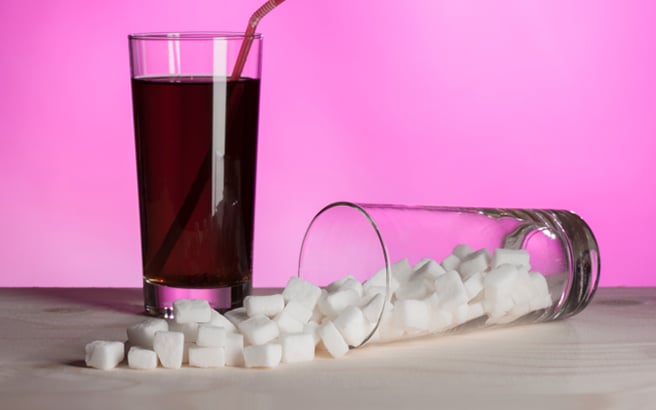Bryony Sinclair is Senior Policy & Public Affairs Manager at World Cancer Research Fund International.
Obesity is reaching epidemic proportions around the world and excess sugar consumption is one contributory factor.
Sugar consumed in drinks is particularly worrying, as our brains don’t register the calories in the same way as those consumed from food. For this reason, actions to specifically curb sugary drinks consumption have been gaining momentum, and attention, in several countries around the world.
New evidence of targeted marketing
Carbonating the World, a report released today by the Center for Science in the Public Interest, reveals the high levels of marketing and its associated health impacts of sugary drinks in low- and middle-income countries.
Carbonated soft drinks are big business, with an almost $350 billion market. As sales of sugary drinks diminish in high-income countries, due to increased public awareness about the health risks, companies are directing their attention and significant resources to emerging markets. The report details investments being made by big sugary drinks companies in Africa, Asia, Latin America and the Middle East.
Thinking globally, acting locally
The report highlights the “glocalization” of products whereby companies think globally and act locally – adjusting their products to reflect local tastes and taking actions to embed themselves into the local culture.
Examples of this in low- and middle-income countries include:
- The Coca-Cola “anthem” for the 2014 World Cup which was translated into 22 languages
- “Share a Coke” campaigns in Mexico, Brazil, Argentina, Colombia, Costa Rica, Nicaragua, Guatemala, Panama, and the Philippines – where coke bottles were labelled with names that were popular within the country they were sold
- Triple mobile phone airtime in Nicaragua through Pepsi product purchases
- Adverts for sugary drinks on school entrance signs in Ghana and South Africa
- PepsiCo’s “Drinkfinity”, launched in Brazil, is a “personal hydration system” that uses reusable drink bottles and “pods” of flavour, aromas and other ingredients
- Sponsorship of children’s cricket tournaments in India
- Free Wi-Fi around Coca-Cola kiosks in rural South Africa
- Culturally tailored mascots to attract children
Using digital marketing
Sugary drink companies are also using many of the same promotional strategies in low- and middle-income countries as they use in high-income countries, particularly newer digital marketing techniques. These include traditional media, internet marketing, social media (Facebook, Twitter, Instagram, Vine) and brand websites.
Digital marketing is immersive and exceptionally good at engaging young consumers. Interactive promotions, games and contests that involve creating ‘shareable’ experiences spread quickly across social media platforms, especially Facebook where any activity on brand pages can appear in the newsfeed of ‘friends’.
Very few countries have measures in place regulating any form of digital marketing (except South Korea and Chile). Better regulation of digital food marketing to children is necessary, especially in our increasingly digital world.
The investment in emerging markets seems to be working – sales of sugary drinks are growing in these areas (e.g. China, Thailand, Brazil and Chile) and decreasing in high-income countries.
Action urgently needed
According to the World Health Organization’s Commission on Ending Childhood Obesity there are more children who are overweight or obese in low- and middle-income countries than in high-income countries.
Now more than ever it’s important for governments of low- and middle-income countries to put into place measures that can help reduce the consumption of sugary drinks.
Most actions tackling sugary drinks are currently being taken in high-income countries and evidence suggests with positive effect.
Trends data shows that countries with taxes on sugary drinks in place are seeing decreases in consumption.
Our NOURISHING database provides examples of implemented government policy actions to promote healthy diets and prevent obesity. Many examples target sugary drinks including taxes in 13 countries, food marketing restrictions to children (e.g. South Korea), interpretive nutrition labelling (e.g. Ecuador), health warnings (e.g. Chile), and standards in schools (e.g. Costa Rica). Countries can learn from these examples and tailor them to fit their own contexts and populations.
If we are to succeed in meeting global targets to reduce premature deaths by non-communicable diseases by 25% in 2025, urgent action is needed to prevent sugary drink companies from targeting low and middle-income countries.
Our 1 minute video features all of our 10 Cancer Prevention Recommendations. For the latest news from us, please follow twitter.com/wcrfint
